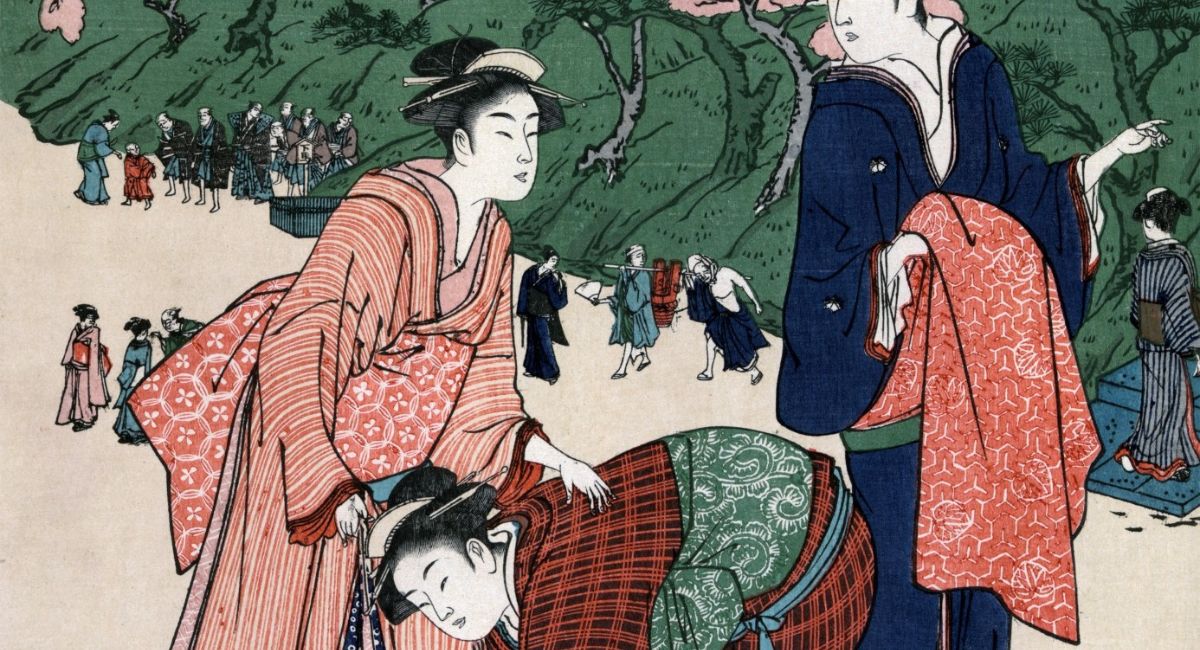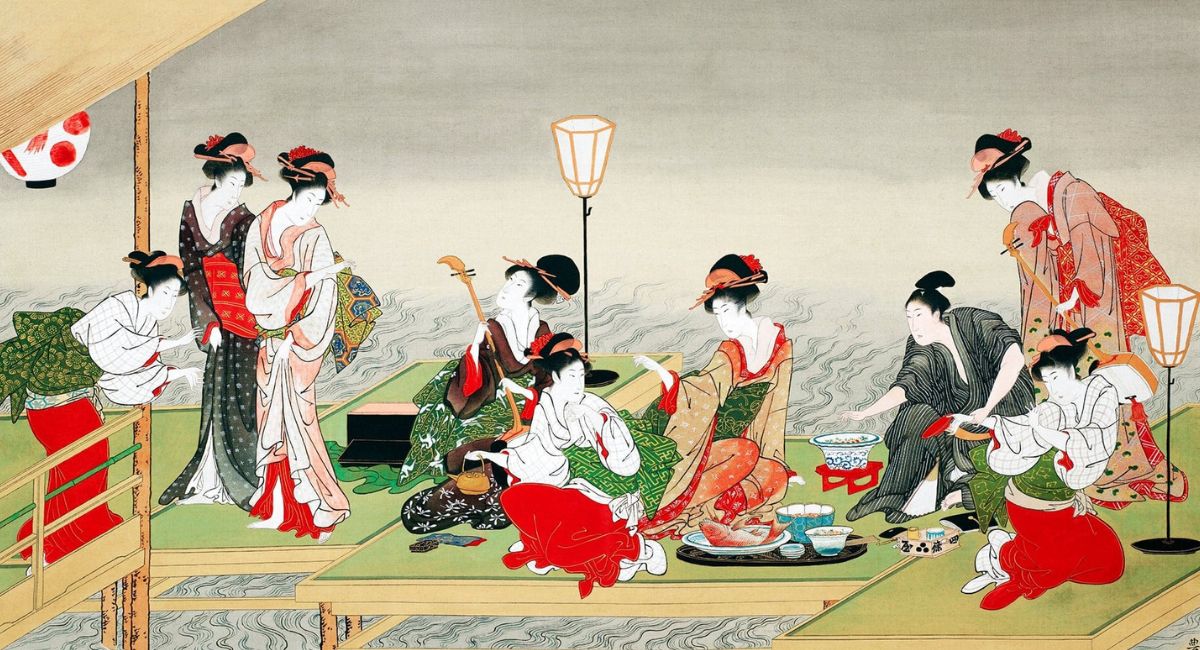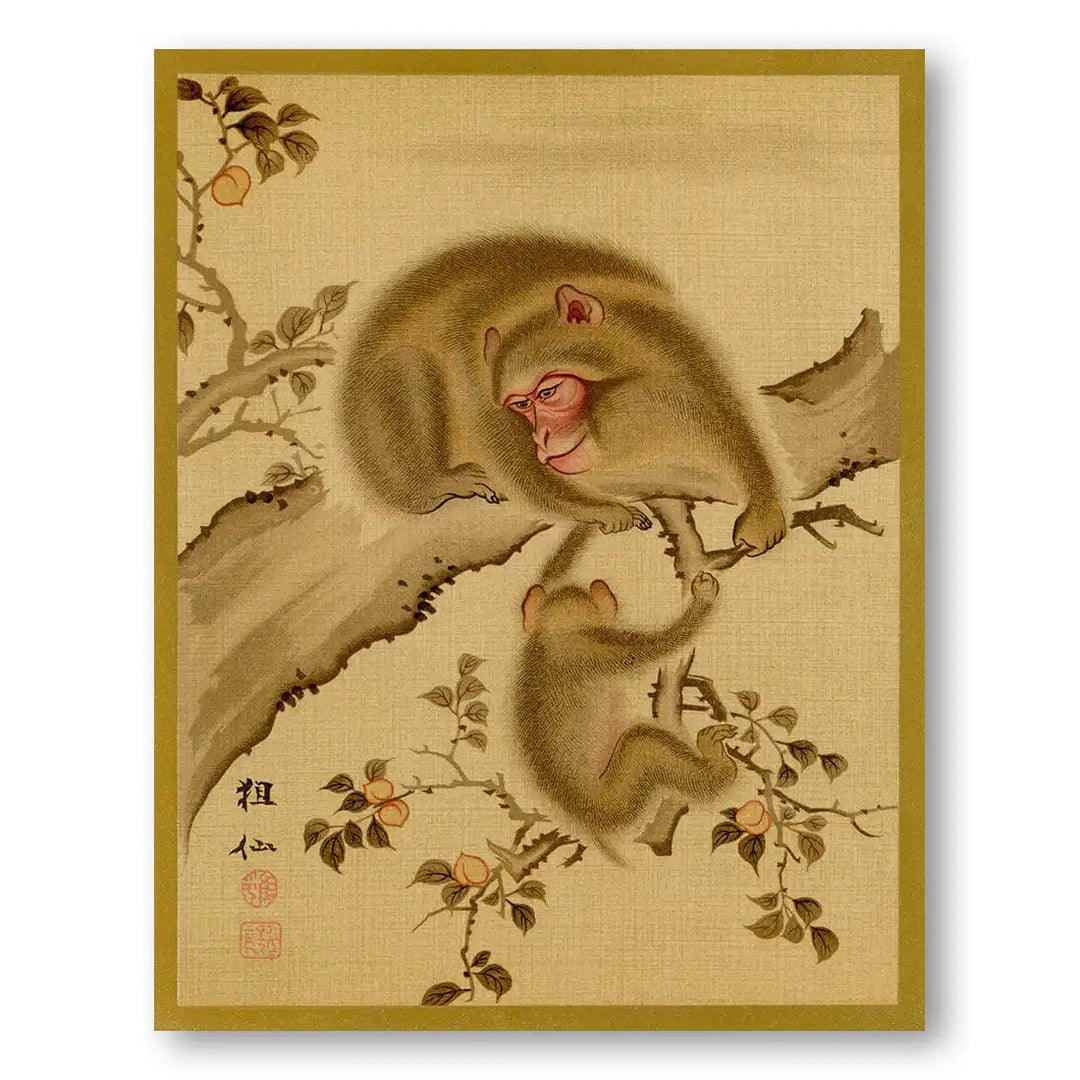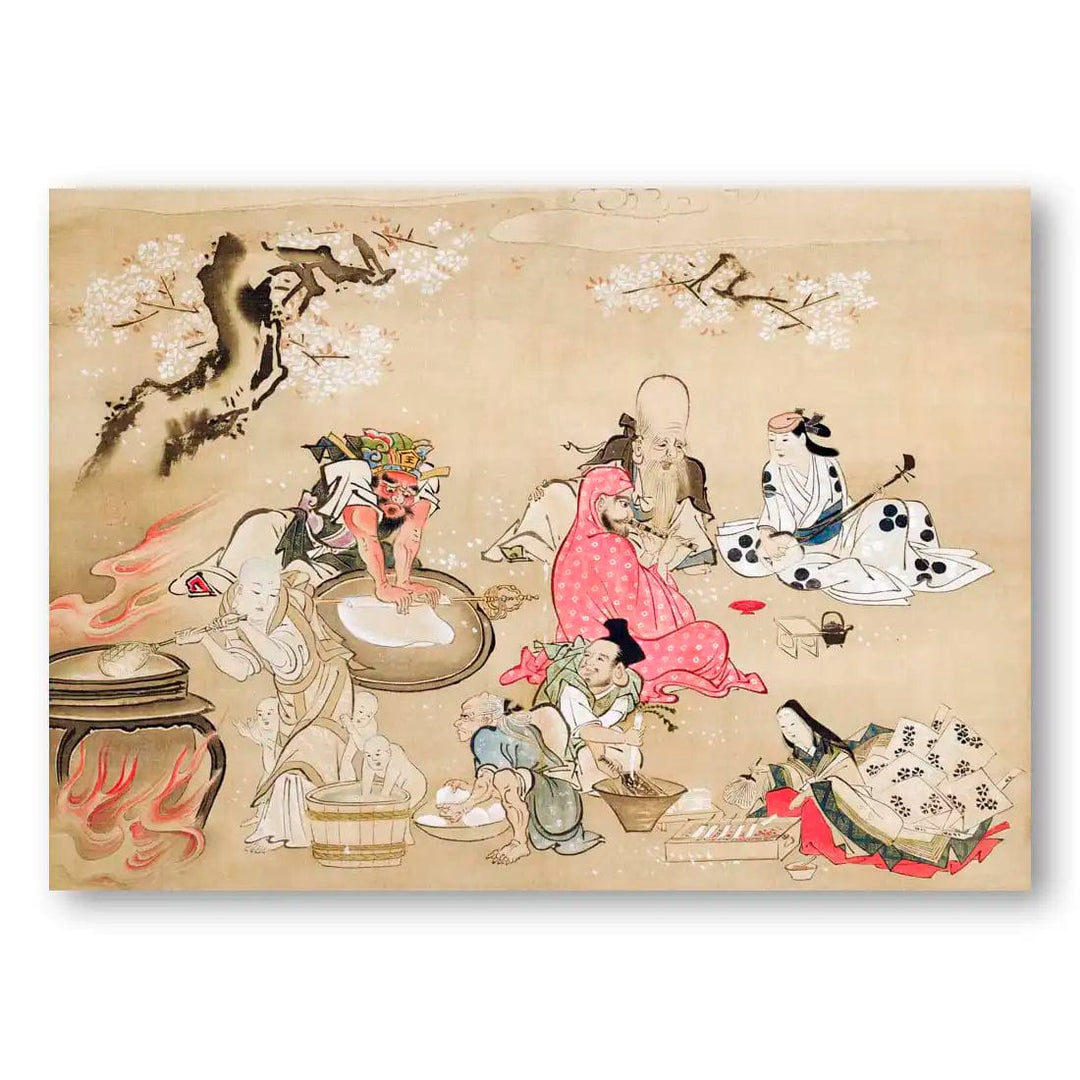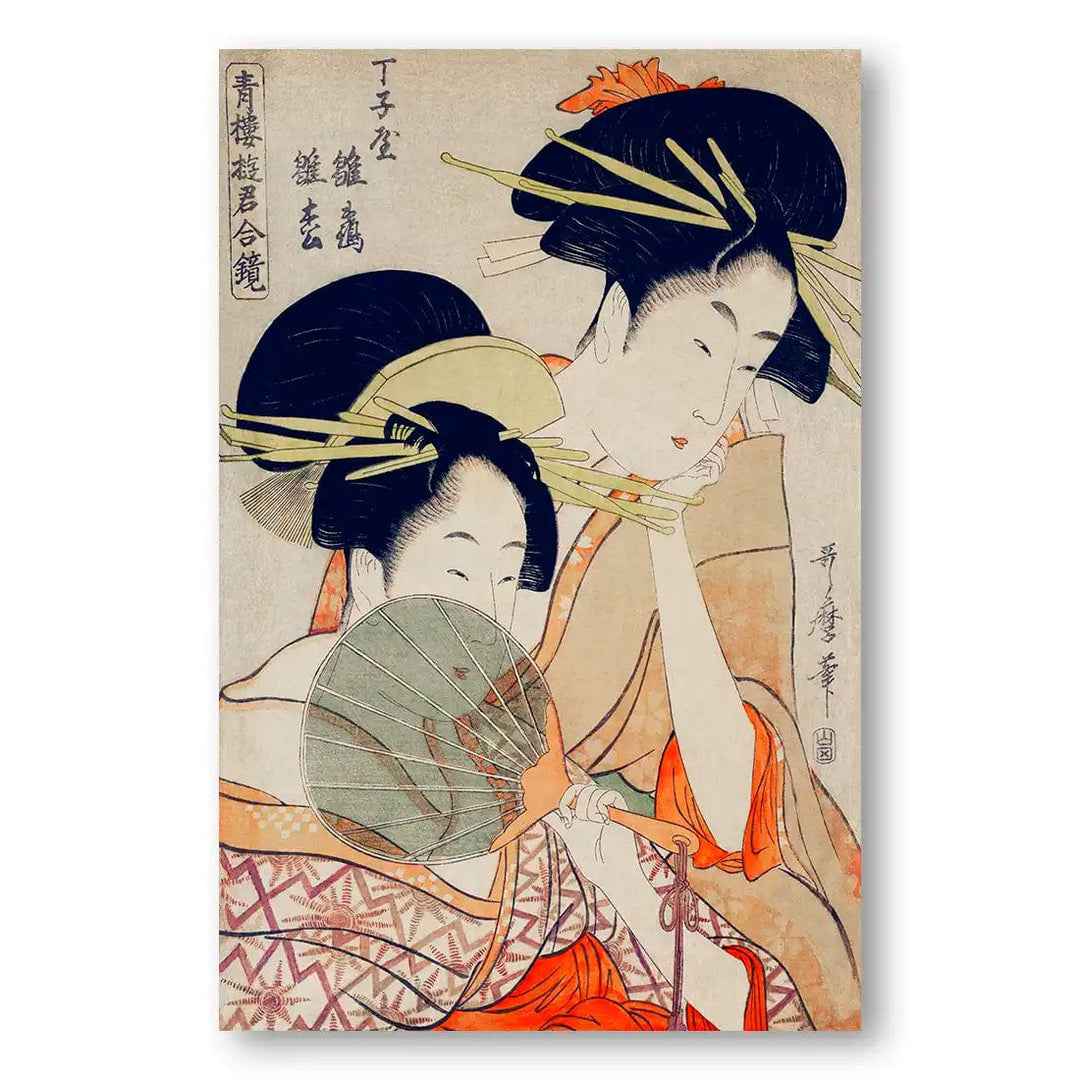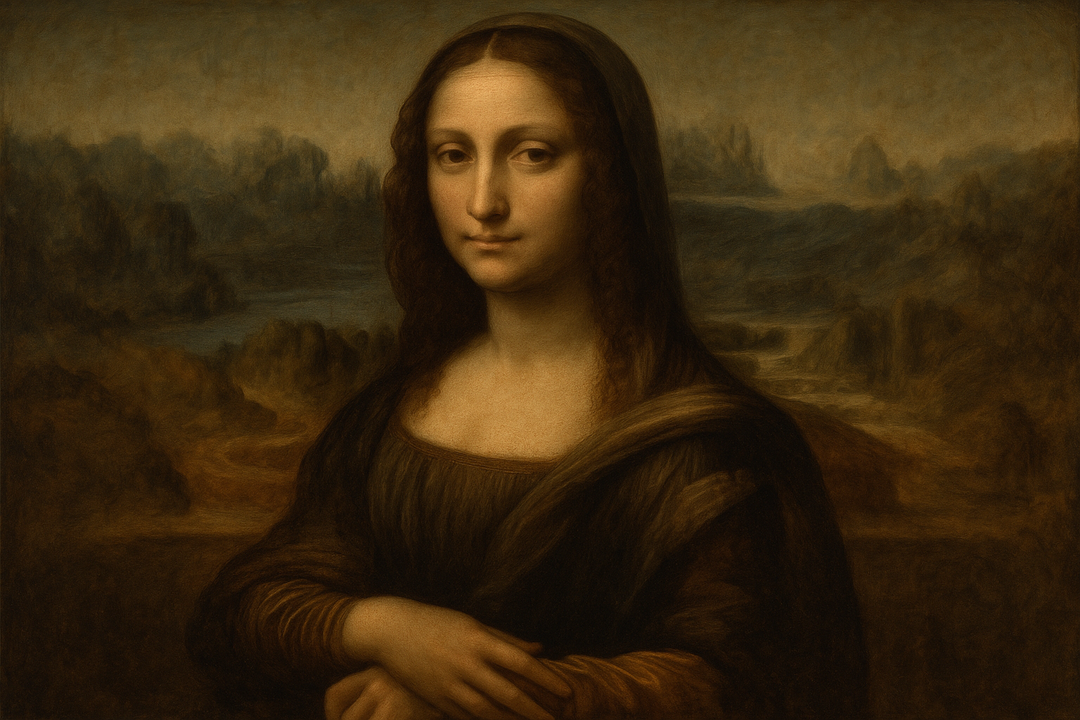Exploring Symbols and Meanings of Japanese Art
| Key Takeaways |
|---|
| - Japanese art is rich with symbolism reflecting cultural values and beliefs - Traditional art forms include calligraphy, painting, pottery, and textiles - Common symbols: red-crowned crane, koi fish, cherry blossoms, and torii gates - Nature and cultural motifs play a significant role in Japanese art - Understanding these symbols enhances appreciation of Japanese art and culture |
Japanese art is known for its rich history, intricate designs, and unique symbolism. In this article, we will explore various symbols and meanings found in traditional Japanese art forms, cultural symbols, and motifs used in art.
Traditional Art Forms
Japanese art is deeply rooted in the country's history and culture. Let's dive into some of the most prominent art forms where these symbols and meanings can be found.
Calligraphy

Calligraphy, or "Shodo," is the art of writing beautifully, and it holds a special place in Japanese culture. It is a way to express emotions and thoughts through the elegance and fluidity of brushstrokes. Calligraphy often incorporates various symbols, such as kanji characters, which can have profound meanings.
Painting
Japanese painting has evolved over time, with different styles emerging throughout history. Many paintings contain symbolic elements, including nature motifs, cultural icons, and religious themes. These symbols often carry a deeper meaning and provide context to the artwork.
Pottery

Japanese pottery is renowned for its sophisticated techniques and unique aesthetics. Symbols and motifs are often used to adorn pottery pieces, reflecting the artist's emotions, beliefs, and cultural heritage.
Textiles

Japanese textiles, such as kimonos and tapestries, are adorned with intricate patterns and symbols. These designs not only serve as decoration but also convey deeper meanings associated with Japanese culture.
Cultural Symbols
Japanese art is filled with numerous cultural symbols, each carrying a unique meaning. Here are some of the most prominent ones:
The Red-Crowned Crane
The red-crowned crane is a symbol of longevity and good fortune in Japanese culture. Its graceful appearance and elegant dance are often depicted in various art forms, making it a popular motif. See our complete blog post on the Japanese Crane Symbolism.
The Koi Fish

Koi fish represent perseverance, courage, and good luck in Japanese art. They are known for their ability to swim upstream against strong currents, symbolizing the determination to overcome obstacles and achieve success.
Cherry Blossoms
Cherry blossoms, or "Sakura," are a symbol of the ephemeral nature of life. Their short blooming period serves as a reminder of the fleeting beauty and impermanence of our existence. This symbolism is often incorporated into various art forms.
The Rising Sun
The rising sun is a powerful symbol in Japanese culture, representing the country itself. It signifies the beginning of a new day, hope, and renewal. This symbol is often used in art to evoke feelings of optimism and pride.
Torii Gates

Torii gates are traditional Japanese gates that mark the entrance to Shinto shrines. They symbolize the transition from the mundane to the sacred. Torii gates are often depicted in art as a representation of spirituality and connection with the divine.
Motifs in Japanese Art
Japanese art often incorporates various motifs that convey deeper meanings. These motifs can be classified into two categories: nature motifs and cultural motifs.
Nature Motifs
Nature plays a significant role in Japanese art, and the following are some commonly used nature motifs:
- Flowers: Flowers are often used as symbols of beauty, purity, and the ephemeral nature of life. Examples include cherry blossoms, chrysanthemums, and plum blossoms.
- Trees: Trees represent strength, wisdom, and longevity. Pine trees, bamboo, and willow trees are frequently seen in Japanese art.
- Animals: Animals are often used to symbolize various virtues and attributes. Examples include the red-crowned crane (longevity), koi fish (perseverance), and the dragon (power).
Cultural Motifs
Cultural motifs in Japanese art encompass a wide range of themes, such as geometric patterns, mythical creatures, and spiritual symbols.
- Geometric Patterns: Geometric patterns, such as the "Asanoha" (hemp leaf pattern), are often used in textiles and pottery. They symbolize growth, prosperity, and good fortune.
- Mythical Creatures: Mythical creatures, like dragons and phoenixes, are often used to represent power, wisdom, and rebirth. They can be found in various art forms, including paintings and sculptures.
- Spiritual Symbols: Spiritual symbols, such as the "Enso" (a circular brushstroke symbolizing enlightenment), are commonly seen in calligraphy and other art forms. They represent the pursuit of spiritual growth and understanding.
Common Japanese Art Symbols
This visual guide illustrates some of the most common symbols found in Japanese art. Each symbol carries its own unique meaning and significance in Japanese culture.
Pro Tip: Interpreting Japanese Art
When examining Japanese art, look for these common symbols and consider their meanings. Understanding these elements can greatly enhance your appreciation of the artwork and provide deeper insights into Japanese culture and history.
Japanese Art Examples
Japanese art captivates with its symbolic depth and timeless elegance. Here are some of our exclusive Japanese art prints that beautifully encapsulate the essence of traditional Japanese motifs, including animals, flowers, and cultural symbols. These prints can be perfect additions to your home or office, enriching your space with a touch of sophistication and cultural heritage.
Conclusion
Japanese art is rich with symbols and meanings that reflect the country's unique culture and history. From traditional art forms like calligraphy and painting to cultural symbols such as the red-crowned crane and cherry blossoms, these elements serve to deepen the understanding and appreciation of Japanese art. By exploring these symbols and their meanings, we can gain a greater insight into the values and beliefs that have shaped Japanese culture throughout history.
If you're interested in bringing the beauty and symbolism of Japanese art into your home, consider exploring our collection of vintage Japanese wall art prints. Each piece offers a unique window into the rich tapestry of Japanese culture and artistry.
FAQs
- What are some common themes in Japanese art? Japanese art often explores themes such as nature, spirituality, and cultural identity. These themes are expressed through various symbols and motifs, such as flowers, animals, and geometric patterns.
- What is the significance of cherry blossoms in Japanese art? Cherry blossoms symbolize the ephemeral nature of life due to their short blooming period. They serve as a reminder of the fleeting beauty and impermanence of our existence.
- What do koi fish represent in Japanese art? Koi fish symbolize perseverance, courage, and good luck. They are admired for their ability to swim upstream against strong currents, symbolizing the determination to overcome obstacles and achieve success.
- Why are Torii gates important in Japanese art? Torii gates mark the entrance to Shinto shrines and symbolize the transition from the mundane to the sacred. They represent spirituality and the connection with the divine.
- What is the meaning of the rising sun symbol in Japanese art? The rising sun symbol represents the country of Japan and signifies the beginning of a new day, hope, and renewal. It evokes feelings of optimism and pride in Japanese culture.
"In Japanese art, every symbol tells a story, every brushstroke carries meaning. It's a visual language that speaks to the heart of Japanese culture and invites us to explore its depths." - Anonymous




